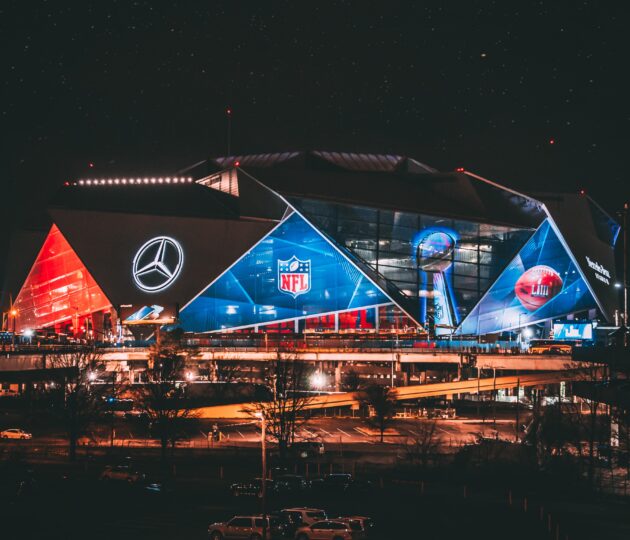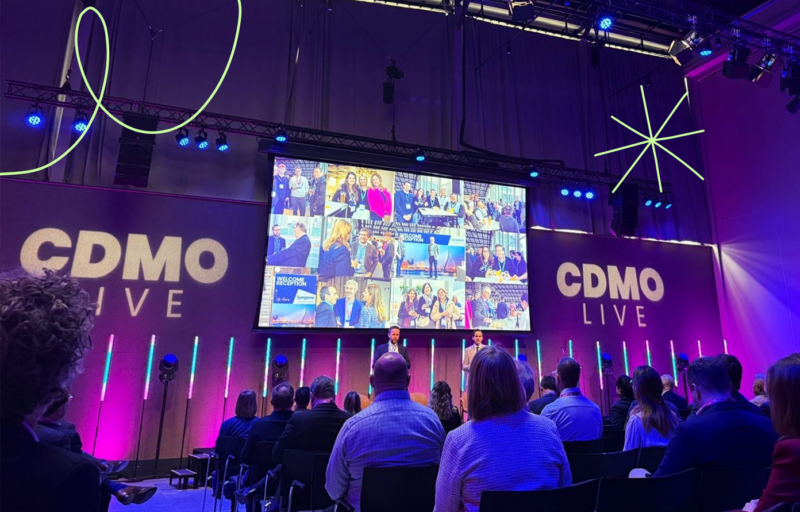blog:
What can life sciences learn from other sectors & sports marketing?

Like a lot of marketers, our talented team spends a great deal of time looking outside of our sector to see what’s happening across a range of industries, to see which brands are battling, what’s happening with hashtags, and what we can learn from advertisers to inform the life science and pharmaceutical industry.
We regularly scan B2B and B2C marketing to garner insights from commercial, consumer, and not-for-profit sectors. Let’s take a look at 8 key trends from outside the life science marketing sector…
1. Customer allegiance
When it comes to winning over customer allegiance and fuelling fires between brand fans, no one puts up a better fight than the big brands; we’re talking about Coca-Cola and Pepsi, McDonald’s and Burger King, Apple and Samsung. Their campaigns grab the attention of millions and are often the talk of social media.
So why do such huge marketing machines go into battle so often in the media? Well, when you have mega bucks to throw at your advertising, why not? Public spats raise your profile, earn your brand a bunch of free publicity, create a talking point and raise your brand awareness.
Does it come with risk? Sure. But for the big brands, going toe-to-toe with a major competitor is a calculated risk. Done well, campaigns can be playful and show your brand’s fun side. They very often put fans front and center, encouraging people to sling mud at the competing brand which, when planned strategically, can generate a heap of user-generated content that is gold dust for any brand.
Consider campaigns carefully next time you see a Super Bowl spat, or a commercial competition. Pause for a second to think about the strategy behind the highly public promotion and then pick a side!
2. Getting the exclusive
Can you believe we’re about to talk about the now-vintage Blockbuster store in a trends article? We can’t either!
Their ad for Super Bowl 57 teased an ad premiere in their only remaining store in Bend, Oregon, that will air as part of their in-store game watch party. A rather sneaky way to get around the big bucks required for an official slot. A digital campaign has built some excitement around their plans and will draw people from the area to head to the store for the game.
Making something feel exclusive isn’t a new marketing tactic. However, it’s a reliable tactic that appeals to the human psychology of FOMO (the fear of missing out), so can be transferred to any industry.
Try to think about what you can do to add that touch of VIP exclusivity to your next campaign…if it’s working for Blockbuster decades after the death of VHS, it must be worth a try, right?
3. Positive steps in EDI
The scramble towards in-home advertising demonstrated increased gender equality when it came to audience targeting in both the USA and UK, with advertisers realizing that female sports audiences were on the rise. In 2022, the UK saw its women’s soccer team on the biggest stage in history at the Women’s Euros Final, where 365 Million people saw England beat Germany to secure the trophy. This marked a cultural shift in a sport that predominantly champions its male counterparts.
Sport is seeing a step back from the male-dominated venue and TV ads featuring vehicle manufacturers, financial services, food/drink and FMCG. Instead, advertisers are favoring family brands, gender-neutral products and non-specialized targeting, in recognition of the fact that the sports, leisure and entertainment industries were adopting a more progressive approach to equality, diversity and inclusivity. Furthermore, this approach is becoming commonplace across many sectors, with advertisers making very conscious efforts to move away from gender stereotyping in favor of content that better reflects global communities.
It’s crucial for the life science sector to consider the changes that have been happening on its own turf.
The needle is being pushed when it comes to more female leaders and people of color taking senior roles at the table, so have you thought about whether you need to adjust your advertising to accommodate that?
Cultural and gender differences can affect business in more ways than you may think, and reframing who your advertising speaks to is key to seeing continued success when building new relationships with clients.
4. May we have your attention please?
Brands that deliver high volumes of user-generated content (UGC) are often able to hold their own in a very crowded marketplace.
Brands fortunate enough to have cultivated authentic and loyal fans used UCG to outshine competitors and filled their feeds with fan content from dawn until dusk; an approach that required only minor input to curate content and ensure campaigns remained on brand. Leaders in this field include brands like TikTok, Starbucks, Chobani (have you tried their flip?), Spotify and Coca-Cola.
Brands leverage UGC to display the effectiveness of their products and services which acts as the social proof of the quality they possess, helping to expand reach and intensifying a brand’s presence in the ‘battle of the brand’.
The million-dollar question – how can that be replicated in a very different industry such as pharma and outsourcing? Often these campaigns work extremely well on platforms such as TikTok with a primarily under-35 audience, so recreating the magic can be tricky. A key thing is considering what you can do to make someone take a second look – LinkedIn has become an increasingly personable platform so creating a campaign that really speaks to the individual within the wider organization you’re targeting will do wonders for your brand’s engagement.
5. Virtually imperfect
The new normal – remote working, education and socializing has bred a culture of realism. Advertisers responded with less polished campaigns that the everyday person is more likely to relate to. After years of always ensuring organizations are seen from their best angles, we saw lower-budget advertising production and video content and were introduced to celebrities and sports personalities dressed down in their own homes.
This down-to-earth, authentic approach saw advertisers showcasing their products in situ and being used by real people, with user-generated content featuring in campaigns to demonstrate social proof.
Realism has enabled brands to tell their product’s story without spin and megabucks.
6. #Evergreen
Global advertisers continue to keep their hashtag game strong. From consumer goods and high street retailers to regulated industries creating, using and sharing their own unique hashtags to boost campaign reach and engage with audiences is still commonplace.
It is clear to see which bands are monitoring hashtags and engagements and capitalizing on trends, or using competitor hashtags to initiate brand banter. This often ignites brand war and can inspire other brands and fans to join in, creating channel-based campaigns for highly engaged followers and generating that much-coveted user-generated content.
Alongside short and long-term hashtags, evergreen content rose in popularity with companies large and small repurposing and refreshing content, both to reach new audiences and to encourage firm followers to reminisce.
7. Bring in the big guns
If Super Bowl ads have anything in common with each other, it’s that the big budgets and world stage bring out the A-list celebrities. This year alone, they have features from Serena Williams, Sylvester Stallone, Will Ferrell and Maya Rudolph, to name a few. With a prime time slot setting companies back somewhere in the ballpark of $7 Million for a 30-second slice of the pie, the ad needs to make an impression within its first seconds, and often a familiar face is an easy way to get in with the audience.
For the right project, bringing an expert from the industry to the forefront can give you the all-important kudos to make the campaign fly.
We’re not saying you need to wheel out your CEO for every single ad, but when it’s done right and you select the right person for the spotlight, it can frame your organization as industry and/or subject matter experts.
8. The tech scramble
Off the back of a tumultuous few years in Sports advertising with city lockdowns and crowd restrictions, marketers had to get clever with their efforts as they weren’t able to rely on their bread-and-butter campaigns.
Advertisers realized that their target audience were highly likely to be watching, streaming, or downloading sports. And, just like that, advertisers could target audiences as they sat on their sofas with very specific campaigns. Everything from Super Bowl Sunday to Monday Night Football was taken over with sponsored content and advertising airtime. No game was safe.
Even though we are *hopefully* moving towards a more stable future (pause for laughter), the marketing landscape will still evolve as algorithms are tweaked and analyzed.
If it isn’t already, digital advertising should be a big player in your marketing strategy, no matter the industry you operate in. Understanding where your customers are now as opposed to 10 years ago allows you to invest in campaigns that will give you that all-important return on investment.
So what can life science marketers glean from our findings?
Whilst other sectors may have a more artistic license and lend themselves well to being a little less polished, there is space for life sciences and the contract outsourcing space to shift towards being more authentic, more engaged, and more interesting.
Although we’re highly unlikely to see organizations in our space fuelling public advertising spats, leaning into realism and taking successful past trends into your latest marketing strategy could inspire future campaigns.
In addition, we can advance our approach to EDI in advertising, and it’s within our gift to be increasingly representative of our communities, clients, employees, and suppliers across our channels and content.
With so many learnings, pharma marketers need to continue to look out at the world to take onboard trends that offer them opportunities to move their marketing forward.
We can’t wait to see what the next year brings…
Related news, insight and opinion




